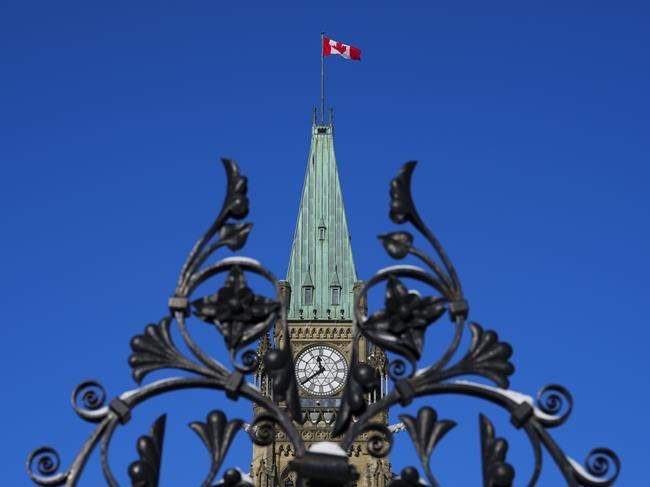OTTAWA — Prime Minister Justin Trudeau's government has tabled its long-awaited legislation to better protect Canadians, and particularly youth, against online harms. Here are five things Bill C-63 proposes to do.
1. Target specific types of harmful content
The government wants to target the non-consensual sharing of intimate images, including deepfakes generated by artificial intelligence and content that "sexually victimizes a child or revictimizes a survivor." The bill would also cover anything online that is used to bully a child or urge them to commit self-harm.
Content that incites violent extremism or terrorism, along with material that incites violence or stirs hatred, would also be subject to the new law.
There is overlap with five categories of content the government proposed tackling in a 2021 consultation document. One key difference: the earlier plan included provisions around hate speech writ large, whereas the new bill does not.
2. Add fresh responsibilities for online platforms
The bill would usher in new rules for online platforms, one of which is broadly defined as the "duty to act responsibly." Companies would be expected to reduce exposure to harmful content by "continuously" assessing risks, developing mitigation strategies and providing tools for users to flag harmful content.
The legislation would also require platforms to publish "digital safety plans" to outline measures to reduce the risk of exposing users to harmful content and track their effectiveness. Companies would also have to share data with researchers.
The government says the new rules would apply to social media sites, "user-uploaded adult content" and "live streaming services" with a certain number of users, a threshold that would be spelled out in detail in coming regulations. Cabinet would have the power to target smaller services "when they pose a significant risk of harm."
3. Create a new regulator and a new ombudsperson
The government seeks to create a new "digital safety commission" comprised of five individuals appointed by cabinet. It would have the power to order the removal within 24 hours of images shared without an individual's consent, as well as content that sexually victimizes a child or survivor of abuse.
The commission would be separate from the Canadian Radio-television and Telecommunications Commission, which regulates traditional broadcasters. "Frivolous" complaints would be screened out.
A new "independent" ombudsperson, also appointed by cabinet, would advocate on behalf of users. It would provide information about complaints they wish to file and make recommendations to social media services, the regulator and the government.
4. Strengthen reporting around child pornography
The government also plans to amend a current law that says it is mandatory for internet services to report instances of child sex abuse images on the internet. Changes would apply those rules to social media platforms and "create authority to centralize mandatory reporting" of such offences "through a designated law enforcement body."
The amendment would also extend how long such data can be preserved to assist in police investigations. It would also extend to five years the current two-year limitation period for prosecution.
5. Change the Canadian Human Rights Act and add stiffer sentences for hate crimes
The government plans to add online hate speech as a form of discrimination under the law and allow people to file complaints against individuals posting such content to the Canadian Human Rights Commission.
It would also make changes to the Criminal Code, including by increasing the maximum punishment for four hate propaganda offences.
For example, someone found guilty of advocating genocide could face life imprisonment, up from five years in prison.
The government is also looking to create a new hate crime offence that could be applied to every other offence, instead of only listing it as an aggravating factor during sentencing.
This report by The Canadian Press was first published Feb. 26, 2024.
Stephanie Taylor, The Canadian Press

